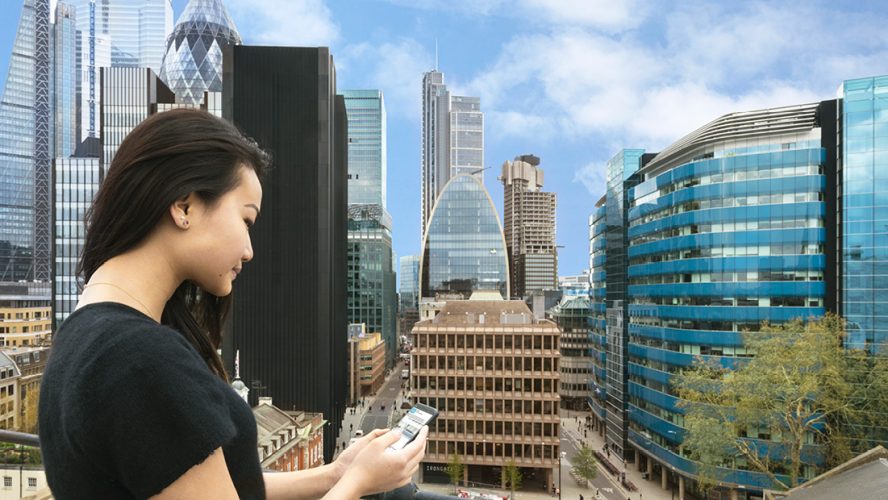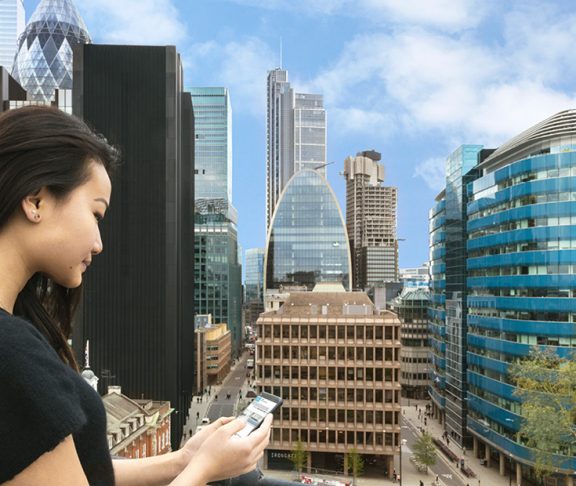
Daniel Drogman
CEO, Smart Spaces

Matthew O’Halloran
Director, Smart Spaces
The right tech can boost employee wellbeing, by facilitating communication between building occupiers and service providers, workspace personalisation; and reducing management workloads.
There was a time when most employers were mainly concerned about their bottom lines. The wellbeing of their workforce came a very distant second, if they thought about it at all.
But “that’s reversed, we’re now seeing businesses place employee wellbeing at the forefront”, says Daniel Drogman, CEO of Smart Spaces. We’re in the 21st century and switched-on businesses realise that the health and wellbeing of their staff is not only paramount for all the right reasons, staff are also their biggest cost. It is accepted now that happy employees are more driven, focused and efficient. Meaning the balance between productivity and mental health is the win-win that employers now seek.
A crucial part of this is making workplaces more attractive, engaging and interactive. “People want to work in an environment they can enjoy and connect with,” says Drogman. “They want to be inspired by their surroundings.” They also want to be informed about their environment and have more control over it, for instance, setting the right temperature that delivers the best air quality for comfort.
Drogman is the Founder of Smart Spaces, an app that connects IoT (Internet of Things) devices and building management systems to give occupiers 360-degree control of smart workplaces. “App-controlled IoT technology is placing employees first”, he says, because it improves the workplace processes by understanding the work-life balance employees try to achieve every day.
Personalising workspaces to empower employees
For example, once a staff member has downloaded the app and their profile is approved, their smartphone becomes their access pass to the building, avoiding the hassle of misplaced keys. It informs and alerts them to all the services and facilities included in the building — such as a concierge, gym, wellbeing studio, beautician and hairdresser — allowing them to easily book appointments and join reward schemes. Employees can further personalise their workspaces via the app by adjusting the lighting above their desk or indeed, any service that is IoT-enabled.
“That’s empowering…” says Matthew O’Halloran, Director of Smart Spaces. “Helping people have greater control over their own work-life is fundamental to our platform. When they’re able to communicate directly with their co-workers and the people operating the building, that builds a real sense of community.”
Essentially, to foster a sense of togetherness, employers need to do more than simply put on a networking event or encourage a ‘bake-a-cake’ day. “We’ve gone beyond that now,” says O’Halloran. The competition to attract and retain talent for businesses has never been greater, and would-be employees will increasingly expect workspaces to be ‘smart’.
Smart tech is good for the wellbeing of owners and landlords too, because it takes the stress out of managing their property portfolio. The key to this is a 3D model known as a ‘digital twin’ — a digital replica that building managers can access via a central platform.
The big benefit of creating a ‘digital twin’
“Digital twins are most commonly used in the aviation industry,” explains Drogman. “A 3D model accessed via a computer on the ground has all the operating parameters of the aircraft in the sky. So, if something goes wrong, it can be diagnosed immediately, and the relevant action taken by the pilot. It’s the same with a digital twin of a building; everything that happens live in the real building is replicated in a 3D computer model. BMS engineers and maintenance can’t always get to the buildings under their control quickly enough, but at their head office, they can now affect change from a central platform rather than going on expensive, time-consuming journeys around their worldwide portfolio.”
A digital twin allows building owners to see real-time analytical data and statistics about energy usage, open climate controls and reduce temperatures, or change the brightness of the lighting in a particular area of an office. And if they want to make a physical change to a building — such as removing a chiller on the roof — they can see what effect it would have by simulating it on the 3D model first.
Why does all of this matter? “Because people matter,” says O’Halloran. “When you put your people first, that makes all the difference. Now, you might think you know what people want from their building/workspace, but this type of technology shows the truth about how they are interacting with its services and amenities — and that can help landlords make better, longer-term, data-driven decisions.”


